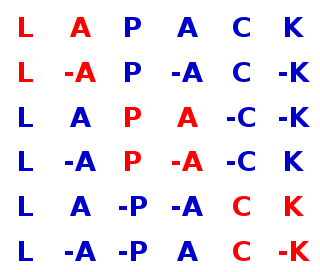
Fortran is a general-purpose, compiled imperative programming language that is especially suited to numeric computation and scientific computing.
Pascal is an imperative and procedural programming language, designed by Niklaus Wirth as a small, efficient language intended to encourage good programming practices using structured programming and data structuring. It is named after French mathematician, philosopher and physicist Blaise Pascal.
Message Passing Interface (MPI) is a standardized and portable message-passing standard designed to function on parallel computing architectures. The MPI standard defines the syntax and semantics of library routines that are useful to a wide range of users writing portable message-passing programs in C, C++, and Fortran. There are several open-source MPI implementations, which fostered the development of a parallel software industry, and encouraged development of portable and scalable large-scale parallel applications.
The C preprocessor is the macro preprocessor for several computer programming languages, such as C, Objective-C, C++, and a variety of Fortran languages. The preprocessor provides inclusion of header files, macro expansions, conditional compilation, and line control.

OpenMP is an application programming interface (API) that supports multi-platform shared-memory multiprocessing programming in C, C++, and Fortran, on many platforms, instruction-set architectures and operating systems, including Solaris, AIX, FreeBSD, HP-UX, Linux, macOS, and Windows. It consists of a set of compiler directives, library routines, and environment variables that influence run-time behavior.
IDL, short for Interactive Data Language, is a programming language used for data analysis. It is popular in particular areas of science, such as astronomy, atmospheric physics and medical imaging. IDL shares a common syntax with PV-Wave and originated from the same codebase, though the languages have subsequently diverged in detail. There are also free or costless implementations, such as GNU Data Language (GDL) and Fawlty Language (FL).
In compiler construction, name mangling is a technique used to solve various problems caused by the need to resolve unique names for programming entities in many modern programming languages.

A+ is a high-level, interactive, interpreted array programming language designed for numerically intensive applications, especially those found in financial applications.

LAPACK is a standard software library for numerical linear algebra. It provides routines for solving systems of linear equations and linear least squares, eigenvalue problems, and singular value decomposition. It also includes routines to implement the associated matrix factorizations such as LU, QR, Cholesky and Schur decomposition. LAPACK was originally written in FORTRAN 77, but moved to Fortran 90 in version 3.2 (2008). The routines handle both real and complex matrices in both single and double precision. LAPACK relies on an underlying BLAS implementation to provide efficient and portable computational building blocks for its routines.
In computing, a parallel programming model is an abstraction of parallel computer architecture, with which it is convenient to express algorithms and their composition in programs. The value of a programming model can be judged on its generality: how well a range of different problems can be expressed for a variety of different architectures, and its performance: how efficiently the compiled programs can execute. The implementation of a parallel programming model can take the form of a library invoked from a sequential language, as an extension to an existing language, or as an entirely new language.
Concurrent computing is a form of computing in which several computations are executed concurrently—during overlapping time periods—instead of sequentially—with one completing before the next starts.
G95 is a free, portable, open-source Fortran 95 compiler. It implements the Fortran 95 standard, part of the Fortran 2003 standard, as well as some old and new extensions including features for the Fortran 2008 standard like coarray Fortran. It also supports the F programming language subset.
Impulse C is a subset of the C programming language combined with a C-compatible function library supporting parallel programming, in particular for programming of applications targeting FPGA devices. It is developed by Impulse Accelerated Technologies of Kirkland, Washington.
In computer science, partitioned global address space (PGAS) is a parallel programming model paradigm. PGAS is typified by communication operations involving a global memory address space abstraction that is logically partitioned, where a portion is local to each process, thread, or processing element. The novelty of PGAS is that the portions of the shared memory space may have an affinity for a particular process, thereby exploiting locality of reference in order to improve performance. A PGAS memory model is featured in various parallel programming languages and libraries, including: Coarray Fortran, Unified Parallel C, Split-C, Fortress, Chapel, X10, UPC++, Coarray C++, Global Arrays, DASH and SHMEM. The PGAS paradigm is now an integrated part of the Fortran language, as of Fortran 2008 which standardized coarrays.
This article compares a large number of programming languages by tabulating their data types, their expression, statement, and declaration syntax, and some common operating-system interfaces.

Goto is a statement found in many computer programming languages. It performs a one-way transfer of control to another line of code; in contrast a function call normally returns control. The jumped-to locations are usually identified using labels, though some languages use line numbers. At the machine code level, a goto is a form of branch or jump statement, in some cases combined with a stack adjustment. Many languages support the goto statement, and many do not.
OpenHMPP - programming standard for heterogeneous computing. Based on a set of compiler directives, standard is a programming model designed to handle hardware accelerators without the complexity associated with GPU programming. This approach based on directives has been implemented because they enable a loose relationship between an application code and the use of a hardware accelerator (HWA).
In computer programming, a function or subroutine is a sequence of program instructions that performs a specific task, packaged as a unit. This unit can then be used in programs wherever that particular task should be performed.
Absoft Fortran Compilers are set of Fortran compilers for Microsoft Windows, Apple Macintosh, and Linux produced by Absoft Corporation. The compilers are source code compatible across platforms.




